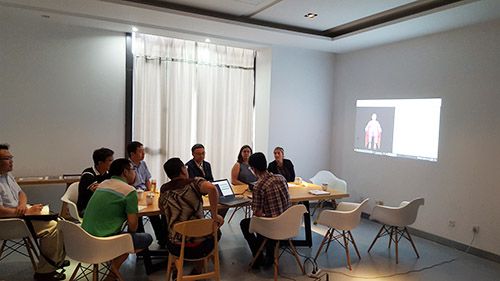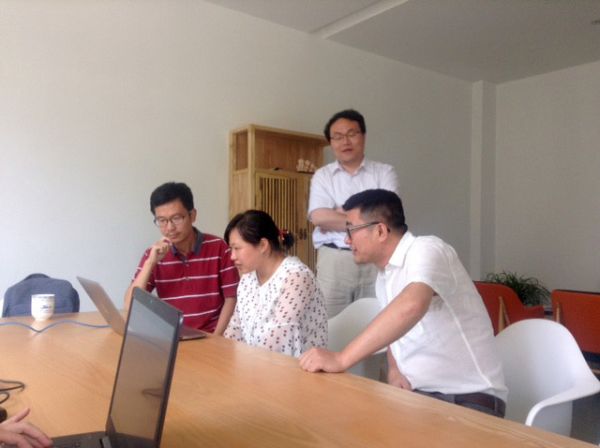Staff Visit Nanjing University and Nanjing Massacre Memorial Hall to Present Indexing Methodology and New Dimensions in Testimony

USC Shoah Foundation staff demonstrate New Dimensions in Testimony to Director Zhang and other staff at Nanjing Massacre Memorial Hall
A group of USC Shoah Foundation staff members visited Nanjing, China, on a twofold mission at the end of August: to introduce students at Nanjing University to the Visual History Archive and its indexing methodology, and to demonstrate the first-ever Mandarin-language New Dimensions in Testimony (NDT) at the Nanjing Massacre Memorial Hall.
The staff who traveled to China were Inna Gogina, archivist; Kia Hays, project manager of New Dimensions in Testimony, Cheng Fang, Nanjing research specialist, and Karen Jungblut, director of global initiatives.
On August 21, the first day of the trip, the staff met with Yanming Lu, researcher at the Nanjing Massacre Memorial Hall and USC Shoah Foundation’s partner on its Nanjing Massacre testimony collection, and the director of the museum, Jiang Zhang, to discuss New Dimensions in Testimony.
The group gave a demonstration of the New Dimensions in Testimony interview of Nanjing Massacre survivor Madame Xia Shuqin to Director Zhang for the first time. Madame Xia is so far the only non-Holocaust survivor and Mandarin speaker to participate in New Dimensions in Testimony.
Through her interactive testimony (which Madame Xia filmed on a trip to Los Angeles last year), museum visitors will be able to have a lifelike “conversation” with Madame Xia’s testimony about her life before, during and after the massacre by asking questions and seeing her filmed responses.

Gogina demonstrated the Visual History Archive, its unique indexing system in which each of its 55,000 testimonies are tagged with keywords from the archive’s thesaurus of over 64,000 terms, and how staff working around the world index the testimonies using the indexing software. She also described the training course for indexers, which can now be completed online.
The students also received a demonstration of Madame Xia’s New Dimensions in Testimony. They had the opportunity to test the system by asking their own questions so that the accuracy of the responses could be logged and used to continue training the computer.